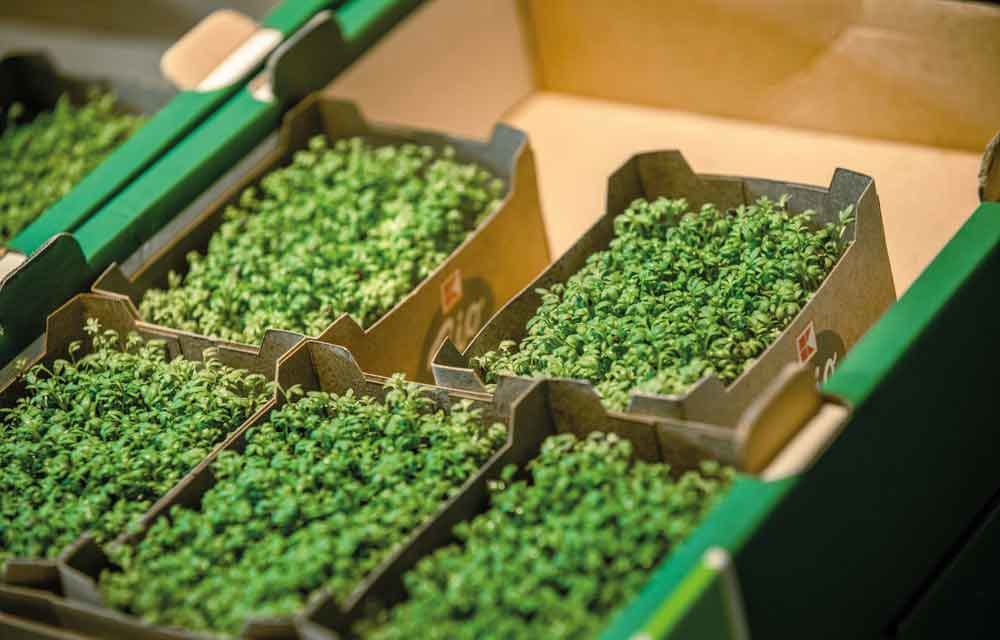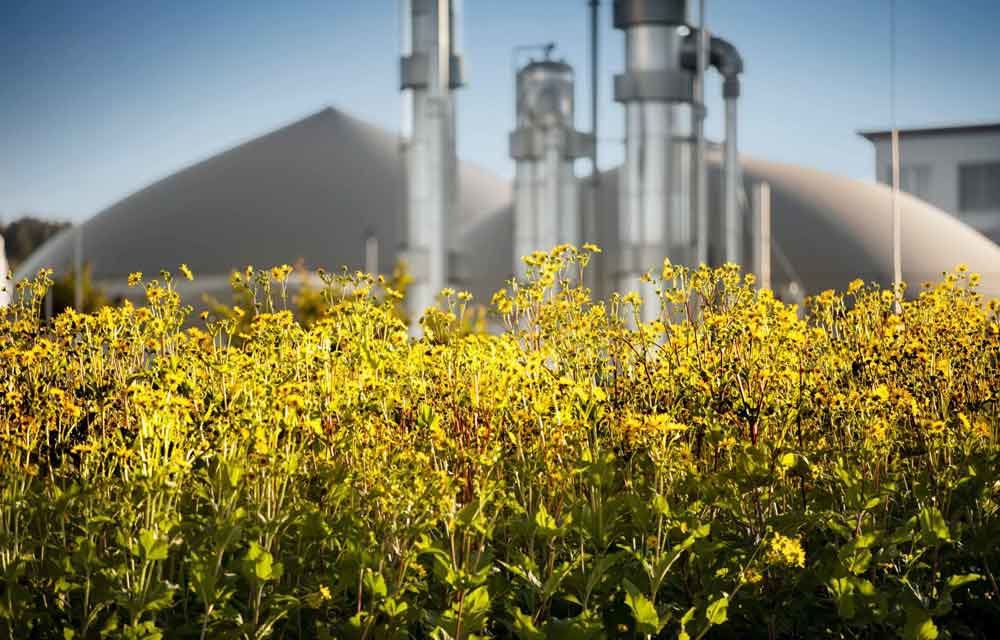One trend that has clearly come to the fore within the packaging industry in the last months and years is the shift towards paper-based packaging. But the rise in demand is increasingly putting a strain on supply, and packaging manufacturers aren’t the only ones facing raw material shortages, both when it comes to virgin fibre and waste paper.
Innovative cup plant-based paper is a potential alternative to “conventional” paper. It uses the fibres of the cup plant (Silphium perfoliatum), which is native to North America and excellently suited to the manufacture of paper due to its growth and fibre properties. In Germany, the perennial is currently primarily used in biogas plants to generate energy.
German company OutNature, a subsidiary of the Schwarz Group’s environmental service provider PreZero, has been using cup plant fibres to manufacture paper since 2020, including for paper used in packaging. In 2021, the start-up commissioned the Fraunhofer Institute for Environmental, Safety and Energy Technology UMSICHT to conduct a study on the ecological balance of the new cup plant-based paper compared to conventional paper products.
HIGHER YIELDS THANKS TO EFFICIENT LAND USE
One finding is worth mentioning right off the bat: when it comes to quality and processing options, cup plant-based and conventional paper are in the same league. Cup plant-based paper can be processed, printed on and is suitable for packaging applications that come in direct contact with foods. In addition, the industry as well as households can return cup plant-based paper via the established cycle, where it can then be processed into new paper. However, some rather significant differences can be found in other areas.
Cup plant-based paper, or rather the manufacturing process thereof, shows some positive environmental effects compared to conventional paper: less sweet water is eutrophicated (meaning enriched less with nitrogen or phosphorous); it causes less ozone depletion and smog; the use of resources such as minerals and metals is more eco-friendly; and the cup plant’s more efficient use of land results in higher yields.
ENERGY EFFICIENCY THROUGH MODERN TECHNOLOGY
However, conventional cellulose cardboard scores points in a different category: forests don’t need fertilising; fields of cup plant, on the other hand, do. As a result, cup plant production causes higher soil acidification. Cellulose cardboard manufacture currently has the further advantage that it uses renewable energy from integrated cellulose production, which improves its ecological balance.
In comparison, at the time the study was conducted, OutNature used a non-integrated testing machine which was state of the art in the 1960s to produce its cup plant-based paper; this was the primary source of energy consumption during production.
One approach to make the production of cup plant-based paper even more eco-friendly would therefore be to switch to contemporary integrated paper machines. An increase in the share of cup plant fibres in the paper is furthermore expected to have a positive impact on the material’s ecological balance, as the production of cup plant fibres has a lower impact on the environment than the production of cellulose.
Currently, the cup plant-based paper produced by OutNature is made out of 50% cup plant fibres and 50 % conventional cellulose for use in paper production. “Using the cup plant to generate biogas and then converting it into electricity has a positive effect on the overall balance,” explains Dr. Daniel Maga, Team Lead Sustainability Evaluation at the Fraunhofer Institute for Environmental, Safety and Energy Technology UMSICHT.
WASTE PAPER USED FOR THE FIRST TIME INSTEAD OF FRESH FIBRES

“The results of the ecological balance study are promising; the paper manufacturing process currently solely causes the highest amount of greenhouse gas emissions. Cup plant fibres have allowed us to generate a regional and renewable commodity with a transparent supply chain that is a reasonable substitute for cellulose, including from an ecological perspective,” explains OutNature’s Managing Director, Thomas Tappertzhofen.
In the meantime, several renowned manufacturers have begun using OutNature’s cup plant-based paper, including Procter & Gamble (for their Gilette displays) and Schwarz Group members Kaufland and Lidl.
In January 2022, OutNature and German wood processor Pfleiderer launched a joint production of cup plant-based paper in the lower grammage range of 35 to 120 grams per square meter, during which mixtures with a share of waste paper, as opposed to fresh fibres, are processed for the first time.


